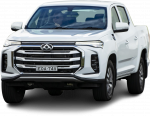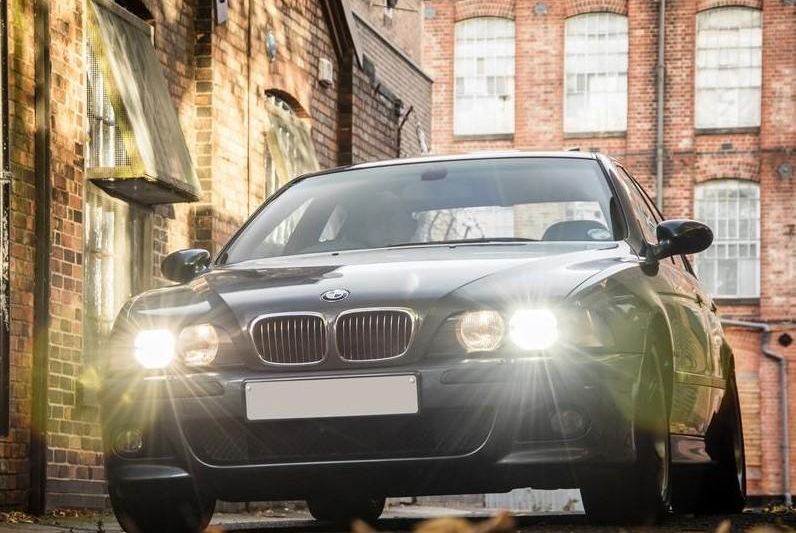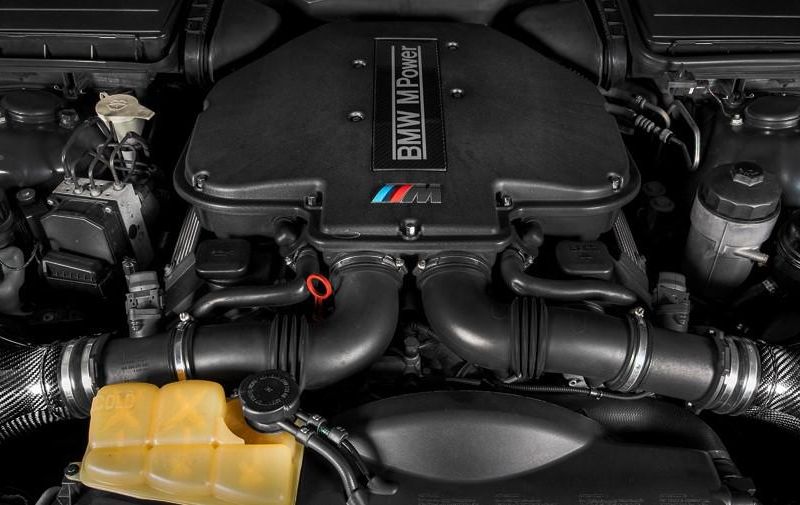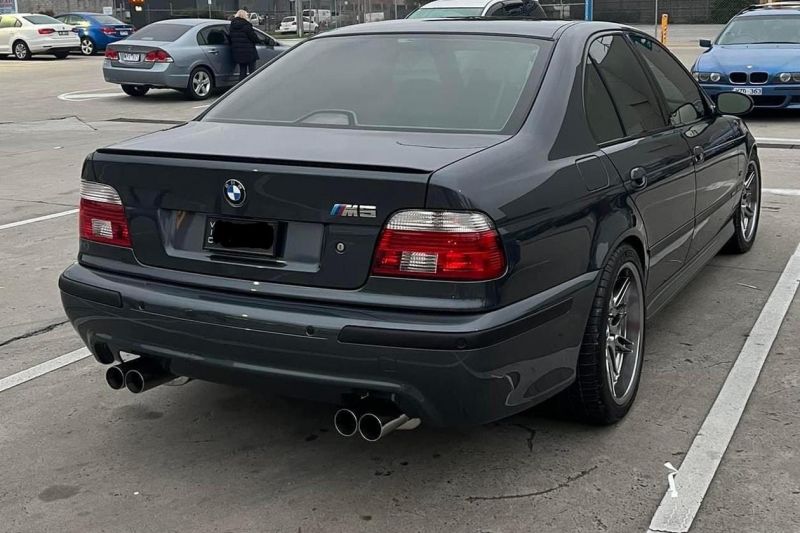About the BMW M5
M S purchased this BMW M5 used for $39,000 (including all on-road costs) in 2019. M S would buy this car again because: “This car defines for me what it means to be a car enthusiast. To lust after a car as a young boy when it was new, to aspire to buy one as a young man, to share ownership memories with my family, and to understand the responsibility of being a custodian of a special car and to preserve it for the future.”
How reliable has your car been? Tell us about any issues.
The car itself has been exceptionally reliable, but that comes with a caveat that although I have owned the vehicle for three plus years, I have done only a few thousand kilometres during that time.
Much of that comes down to the pandemic period, but also due to the fact that I spent a lot of that enforced time in lockdown pulling the car down and extensively refurbishing with 150,000km on the dials.
I preventatively addressed all the common failure points such as VANOS, timing chain guides, hydraulic lifters, fuel pump and injectors, PCV system and vacuum lines, the entire cooling system, a myriad of engine sensors, complete overhaul of the braking components and every single bushing, steering and suspension arm.
I have a spreadsheet with 100s of lines of parts and components that were replaced with some $40k invested (no labour included as I did this all myself). In essence, aside from the number on the odometer, the car is mechanically brand new and as such I have had no reliability issues.
However, having owned a number of BMWs from the late ’90s to 2010s, I have learned a neglected BMW will quickly snowball itself into a mechanical mess that can be hard to unwind – so this mid-life refresh was about ensuring my time with the car was as enjoyable and pain free as possible.
What do you think of the ownership experience with your car?
I have a visual imprint on my memory of seeing an E39 M5 of a Wheels magazine at the age of 15.
At a time when local products were boasting 190-200kW figure from pushrod V8s, it exploded my impressionable mind to learn of a four-door V8 BMW that packed 300kW with quad cams and ITBs that revved to 7000rpm.
The ethos of the car is the epitome of a ‘brute in an Armani suit’. Aside from the quad pipes and a small M5 badge on the door strip and boot lid, only a true train-spotter would know what lies beneath. I love that it flies under the radar, and that it was part of a movement toward similar high-powered ‘bahn-storming sedans like the E55 AMG and XJR, and probably the beginning of the ‘one upmanship’ that followed in the form of the E60 V10 M5, the twin-turbo Gallardo-derived V10 in the C6 RS6 and the mighty supercharged W211 E55, and brutal W204 C63.
These are some of my favourite cars of all time – U-boats – and the product of a downright bonkers era when the Teutonic heavyweights threw the rulebook out the boardroom window.
Are you happy with the price and features of your car?
Perhaps I’m showing my age but for me, the car has all the features I want and nothing more. That is to say it has A/C, power seats, electric windows, and cruise control.
There are some factory optioned extras such as the electric rear sun blind, heated seats, park distance warning, and I plan to add a Bluetooth module at some stage. But given the car is not a regular commuter, I don’t miss the creature comforts and safety features of my newer vehicles.
I feel like I was lucky enough to get a hold of my car right before the values took off. For a while there, circa 2015, it was possible to pick up a rough example for high $20k and a decent example for mid $30k. Things went a bit haywire during the COVID-19 era, and there was a period where pretty average examples were changing hands for $80-90k and moving within days of being listed on the market.
Given the amount I’ve tipped into mine, this came as somewhat of a relief to see values climb so aggressively.
Things have cooled considerably since then, but prices are still sitting in the $60-70k range – more for a well sorted car. At that price, knowing you will undoubtedly need to continue to spend on regular maintenance and upkeep you need to really want to get into an E39 M5 for enthusiast reasons.
Otherwise I would point you toward a used M2 or M3, or a later model C63 for similar money, more performance, and fewer headaches.
Anyone looking to get into the market is well advised to get a PPI done, as small but common things like oil leaks, worn clutches, suspension and diff bushes can get expensive very quickly – especially if you’re paying someone to do the work.
I do all my own maintenance and repairs which keeps costs manageable for me, but I have noticed a very sharp increase in the price of some obscure parts that will truly shock – especially any parts that are bespoke to the M5 or plastic components that live under the car or in the engine bay that notoriously become brittle over time.
(I am pretty sure BMW sourced their plastics from the same supplier as Fisher Price during this era). Most of my OEM parts I order from overseas, which despite the criminal amount shipping costs, is still cheaper than sourcing genuine parts through a dealer.
But the increasingly unfavourable exchange rate really hurts now, and there’s often weeks of waiting for things to arrive. They’re not a cheap car to keep running in top condition, and any experienced old-BMW owner will warn you ‘there’s nothing more expensive than a cheap BMW’ – so always buy on condition and service/maintenance records.
What do you think of the performance and economy of your car?
Again, I would describe the performance as adequate. It is certainly not the quickest car compared to modern day options, and an enthusiastic driver in a modern hot hatch with AWD and a rapid fire auto will show it a clean set of heels at most traffic lights and on a twisty backroad – but I guarantee I am having more fun trying!
In terms of the connected and visceral feel of a weighty hydraulic steering rack, the ‘snick snick’ of the six-speed and the instant response that the individual throttle bodies allow it to feel fast and exciting. Add to which, the car only weighs 1700kg and is dimensionally identical to the current generation 3-series but with more N/A power and equal torque as a turbocharged M340i – it’s quite a compelling package.
I have added a set of lightweight mufflers to replace the obscenely heavy and muted stock cans, and have also installed an Eventuri carbon fibre cold air intake system that I will never tell my wife how much it cost.
Neither adds anything in the way of performance, but it does uncork the beautiful roar of those individual throttle bodies up front and a nice rumble out back. There isn’t a whole lot more than can be done to eke any more power from the already highly tuned motor. However, one major shortcoming of the design was the decision to use the M62 ‘log’ style exhaust manifolds.
Reportedly this was in a rush to get the car to market, or maybe the bean counters stepped in. Either way, they choke the engine, and a set of aftermarket headers from brands like Supersprint or Evolve have been proven to liberate another 30-40 wheel horsepower – not insignificant for an N/A motor.
Another welcome addition was to add the shift lever from an E60 540i and a more heavily weighted gear knob from the E46 ZHP, which shortens the gear throw and adds more confidence to the engagement. There are some other trick bits in there, but ultimately the end result is a very positive engagement compared to the vagueness the car originally had.
The only part I would say that betrays its age from a performance perspective is the braking system. The single piston calipers are adequate, but not fantastic. The two piece floating front rotors were advanced for the time but at 345mm and they’re probably good for one very high speed stop, but become quickly overwhelmed on a brisk downhill run with repeated stops and minimal cooling cycles.
I have upgraded the system with stainless steel lines, a larger brake booster and master cylinder from a later E65 BMW, and put some decent pads in that has helped dramatically with pedal feel – but jumping in a newer car with much larger rotors and multi piston calipers will soon put things back in perspective.
Aftermarket upgrades are available, but fitting anything much larger behind the stock 18 inch wheels limits the options.
Economy wise, there is no hiding the fact that when driven enthusiastically it will drink like a sailor on shore leave. It does an exemplary job of converting fuel to forward motion and noise so 20L/100km is not unusual, and a hard charge will see the fuel gauge drop as fast as the revs rise.
But on a highway cruise it will sip around 9.0 – 10L/100km, mainly because it is loping along in a very tall sixth cog that is geared to run all the way to 300km/h on the autobahn. Ultimately it’s ‘smiles per miles’ and I’ll leave it at that.
What do you think of the technology in your car?
At the time of launch, the tech was pretty state of the art with CD/satellite based GPS, car phone, CD stacker and in-car TV. None of this is useful today. And the downside to the system is that the way it is architecturally designed, all of the components sit on a single communication ‘BUS’ – so that if one part goes out, it can cause some very odd behaviour in other systems and sometimes take the whole lot out.
I had an issue where water got into the boot after I installed new tail lights and didn’t correctly seal them to the body. The water damaged the AM/FM receiver, and took out my whole audio visual system and some of the dash lights. Little things like that can be expected from time to time, and you need to prepare yourself mentally to accept that.
The cupholders in the car are a running joke amongst BMW owners of this era, so plan to drink your coffee in-store or you’ll be mopping up the mess for hours.
I’m an advocate for the analog driving experience, but I am also a strong believer in the active safety systems available on newer vehicles such as AEB, LDW and blind spot monitoring. I wouldn’t put my family in a car on a daily basis that didn’t have these features – but it is very nice to jump in the M5 and enjoy a simple dial cluster with no electronic warnings and beeping, and to just roll the windows down and blast down a backroad.
What do you think of the ride comfort and handling of your car?
I love the way this thing goes down the road. I have been lucky enough to work in automotive circles where I get to drive some high performance and expensive machinery on a regular basis.
As fashion and consumers dictate bigger wheels with rubber band tyres, a ‘sporty’ ride is defined by the lack of body roll and hugely over dampened suspension.
It’s so refreshing to get back into something designed to ride with the bumps and mechanically adhere to the road through suspension compliance and weight transfer. The car has an almost entirely bespoke alloy subframe that was not on other 5 Series of the time, so it certainly wasn’t a case of bolting a big motor to the standard chassis.
One of my favourite videos is of the E39 M5 chassis on a rolling road test rig, and watching the way the tyre sidewalls flex and the suspension rolls into corners – moving the weight of the car to force mechanical grip. YouTube it, it’s fascinating.
Criticism has been levelled at the recirculating ball steering that was necessary to fit around the big V8, and to be fair it isn’t as direct as a traditional hydraulic rack and pinion – but compared to some of the modern electric steering setups, you could argue the toss as to which has less feedback.
As mentioned, I spent considerable time and money going through the suspension to try and restore what the engineers were trying to achieve when new. Every single bushing, arm and bearing has been replaced, and I have upgraded a couple of known weak points with upgraded units from either the aftermarket sector or from later model BMWs.
I have also added Koni adjustable shocks and Dinan springs, but these are only slightly firmer than OEM. I opted for Micheline PS4s, and I think the advances in tyre technology have possibly pushed the handling of the car beyond what it was capable of new.
If I were wanting to go chase 911s in the twisties, I would probably try and dial out some of the body roll, particularly over the front axle as the car definitely likes to load up the outside front and understeer early. That could be overcome with a stiffer swaybar and stepping up to a quality adjustable coilover, but for me the trade off could ruin the ethos of the chassis; the car is what it is.
The LSD is also fairly reserved and the traction control is simplistic and invasive. An aftermarket LSD from Quaife or Wavetrac that locks up a bit earlier and more aggressively would help to fire the car out of tight corners and help put the masses of torque down without immolating the inside rear. If I were going to undertake that exercise, I would also put in a shorter diff ratio because the gearing is so so tall and unnecessary for Aussie roads.
In terms of raw handling and point-to-point ability; the E46 M3 stablemate is probably a better car, but not a better all-rounder.
Comfort wise, I would much prefer to take this on a long drive over B-roads than anything modern short of an S-Class. The cabin is quiet and tight, well insulated and devoid of rattles. The A/C blows strong and cold. The heated seats are on the smaller side, but hug my frame nicely without feeling over-bolstered.
The leather and cushioning is soft and supple and driving position is low enough that you sit ‘in’ the seat rather than ‘on’ it, like many newer cars. Dimensionally the cabin is perfect. Small enough that you can feel where the corners of the car are, but with the generous glass-house and a low dash; large enough not to feel cramped. Again, think current 3 Series but with better visibility.
Do you have any additional comments about your car?
There is no shortage of YouTube content creators and automotive journalists who wax lyrical about the E39 M5 being one of the best M5s of all time; if not one of the best M cars ever built.
I have deliberately avoided that rhetoric, but not because I think it’s underserved. I bought the car purely for my own reasons and I’m assessing it on those. I think it is one of the most handsome three-box designs ever penned, that I love the concept of a race-bred engine in an unassuming sedan, and that I have the chance to be the custodian of a piece of history that will likely never be repeated – a large displacement N/A V8 with a six-speed manual that makes all the right noises.
I’ve had over 40 cars, meaning I’m averaging roughly two a year since I got my license. Life’s too short to drive boring cars, and I am constantly hunting for the next thing.
And by no-means am I a BMW fan boy – in fact I have a 2006 E55 AMG wagon in the stable right alongside the M5. But the M5 is the only car I have ever felt with true confidence that I will never sell, no matter the offer or circumstance.
Is it a truly great car? Probably. Is it my perfect car? Definitely.






